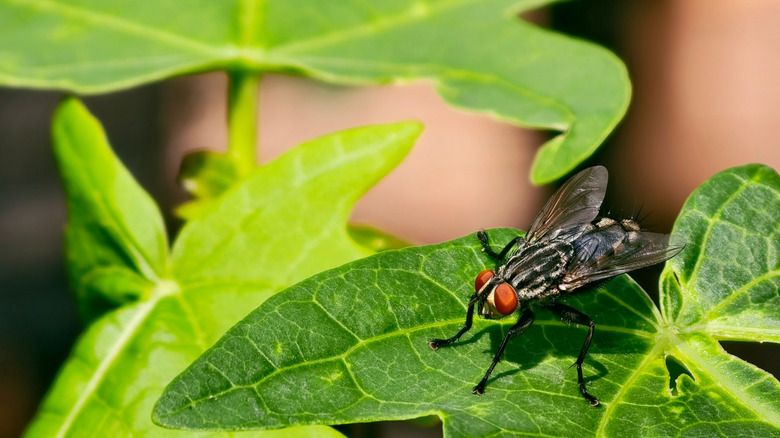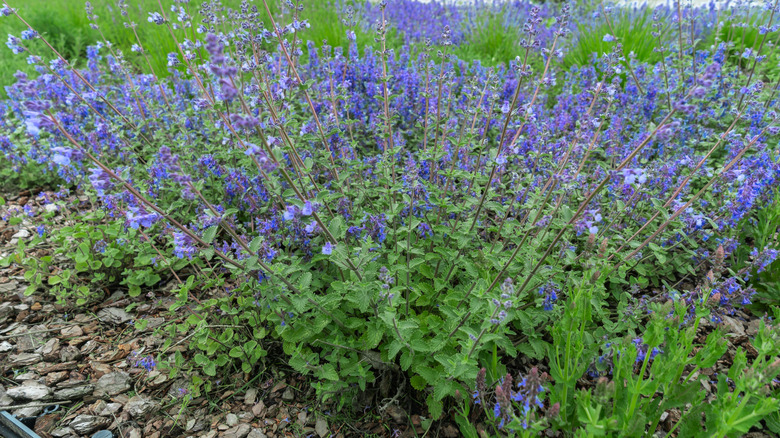The Fast-Growing Herb You Should Plant To Help Keep Flies Away
Some of the 110,000 species of biting and non-biting flies are more than just bothersome insects like fruit flies, which are attacked by common issues. Some are pollinators, others feed on garden pests like aphids, and some even control weeds. But many, like the house fly and the mosquito, carry diseases. Spending an afternoon outside tending the garden or an evening sitting in an Adirondack chair sipping wine with flies buzzing around isn't a pleasant experience. A healthy crop of fast-growing, easily maintained catnip (Nepeta cataria) can help keep your yard fly-free. Scientists have isolated the compound that not only makes catnip irresistible to felines but also repels certain insects. The compound, nepetalactone, has been shown to be as effective as DEET, the ingredient in commercial insect repellents.
While catnip has been used as an insect repellent for millennia, it wasn't until 2021 that scientists discovered how it works. In addition to its well-known effect on cats, catnip from your raised-bed tea garden can be brewed in an herbal tea to treat digestive problems and as a sedative, and both the leaves and the flowers are used as culinary herbs in soups and sauces. Growing catnip is cheaper than repeated use of pesticides to control flies, and has no ill effects on the environment. It also has very low toxicity, making it safe for children and pets, though occasionally an overeager cat that eats too many leaves may experience diarrhea or vomiting.
Growing catnip in your garden
Catnip, hardy in USDA zones 3 through 9, is native to Europe and Asia but has been naturalized in the U.S. The plant prefers full sun but will grow in partial shade in soil with good drainage. It tolerates dry conditions and will grow back in the spring after dying back in the winter. Fragrant purple or white flowers bloom in spring and continue to bloom through the growing season, if you're attracting pollinators to your yard. Once established, the plants are very hardy, resisting disease, insect pests, drought, pollution, and poor soil. They can be adversely affected by heat, so if you live in a very hot or humid area, give the plants afternoon shade.
Nepeta cataria is considered invasive in some areas of the U.S., including Alaska and West Virginia. Shear off the flowers once they've bloomed, and if your catnip gets out of hand, you can mow it down to the crown or dig it up. You can also grow catnip in containers, lowering the risk of invasiveness. If you want to harvest some of the leaves to dry for your feline, the aroma of catnip is most potent when the plants are in bloom.
The names catnip and catmint are sometimes used interchangeably, but are technically not the same. Catmints (Nepeta spp.) are similar to catnip in many ways, including the presence of nepetalactone, growing conditions, hardiness, and resistance to pests. They are both members of the mint family. A popular variety, Nepeta x faassenii, is sterile, so there's little chance it will take over your garden.

